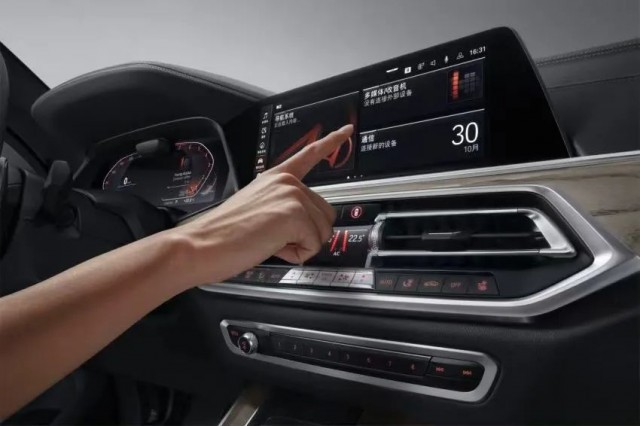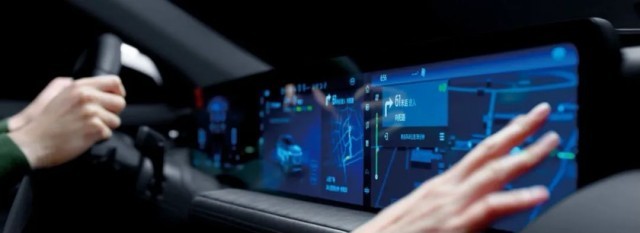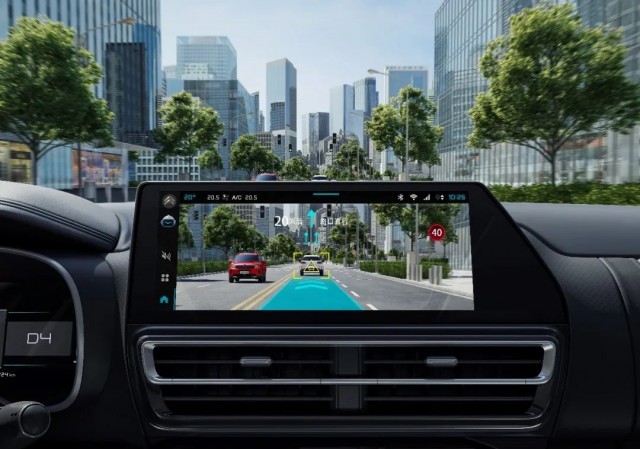Is the charging of car networking an experience upgrade or a consumption trap?

"My car has been used a lot, and it was normal before, but this year a message suddenly popped up saying that it would cost more than 300 yuan to continue to use some car networking functions." A car owner in Beijing told reporters that he bought a BMW 3 Series sedan four years ago, and he was puzzled by the sudden charging by the manufacturer. He said, "When buying a car, these are standard, and now they can only be used after charging. The display screen doesn’t even show the road conditions. Is this reasonable? "
With the electrification and intelligent upgrade, the vehicle networking system has gradually become the standard for vehicles. Nowadays, cars running on the street can be regarded as "antiques" without networking function. However, in recent years, many users found that some car networking functions began to charge, and many consumers even learned that these functions were actually free for a limited time and needed to pay a certain fee to continue using them.
Then, is the car networking charge an experience upgrade or a consumption trap?

Zou Ming (pseudonym), an expert in the field of intelligent networking, said that the Internet of Vehicles can realize an integrated network of intelligent traffic management, intelligent dynamic information service and vehicle control, which is a typical application of the Internet of Things technology in the transportation field, the only way for the mobile Internet and the Internet of Things to develop in essence and depth, and the integrated technology for future information communication, environmental protection, energy saving and safe development.
At present, car companies do not divide the functions of car networking uniformly, but most of them provide supporting functions around networking. Industry insiders told reporters that from the perspective of the cost of car networking services, it mainly includes three parts: hardware cost (car terminal and software), communication cost (data flow) and content cost. Because hardware is generally used as a car terminal, it is often directly embedded in the car, and the cost is included in the price of the whole car. Therefore, the composition of car networking charges is actually in communication cost and content cost.
Generally, the communication cost directly refers to the data traffic cost required for terminal networking, and the charging party includes communication service providers such as China Unicom and China Mobile. The content cost is a customized service provided by car companies.
At present, there are more and more vehicles with the function of car networking in the market. This kind of car networking service is mainly controlled by mobile APP, such as remote opening and closing, vehicle starting, air conditioning control, vehicle anti-theft, audio and video information push, emergency rescue, vehicle information viewing and so on. The above-mentioned insiders pointed out that such services as emergency call service (when a life-threatening situation occurs, the vehicle will automatically send distress information to the nearest emergency center) and anchor call service (when the vehicle breaks down, the vehicle will immediately call the road rescue agency) are the car networking services that consumers pay more attention to at present. The extended charging items are traffic and networking services. Zou Ming told reporters that Anjixing, which provided car networking services in the early days, mainly focused on security, and could provide users with 14 services including 6 categories. Later, it launched a smart phone app to remotely control the functions of air conditioning, windows and trunk in the car. Nowadays, new cars generally have the functions of seat heating, active steering of rear wheels, and intelligent interconnection of app (remote vehicle control).

Intelligent networked car has become a new type of intelligent terminal. Some people think that hardware constitutes the basic structure of a vehicle, and the real definition of a vehicle is software application, because software is more imaginative and valuable. In other words, the value chain of the automobile industry will shift from the single hardware sales in the past to the continuous software and service premium business model, and the value-added of the car networking service has gradually become the growth point of the interests of automobile enterprises. Different car companies provide different networking functions. Although the industry has not yet formed a unified charging standard for car networking, most car companies have the idea of charging for it.
It is reported that the market price of GM’s car networking system is about 3,000 yuan higher than that of ordinary models, and it usually provides car owners with a full-featured free trial service for one year. After the expiration of one year, if consumers still want to enjoy the car networking service, they have to pay a certain fee. It is understood that the annual fees of the four kinds of packages it provides are between 780 yuan and 1,800 yuan.
General OnStar is currently the most well-known and installed interconnected system on the market. Since 2017, as long as consumers buy vehicles equipped with OnStar system, they can enjoy five years of basic services, and 100G of car-linked application traffic is free for life every year; The remaining appreciation services are only available for one year. After five years, if consumers still want to use mobile phone remote control and other services, they need to spend money to buy them. It is understood that the specific price, anti-theft interconnection package is 499 yuan a year, 799 yuan for two years and 1499 yuan for four years; Enjoy the internet package, which is 999 yuan for one year, 1599 yuan for two years and 1999 yuan for four years; The Supreme Internet Package is 1699 yuan for one year and 2399 yuan for two years.
Tesla also began to "test the water" in terms of car networking service charges. Since July 1, 2018, Tesla has launched a standard service package and an advanced service package, in which the advanced service package requires users to pay when purchasing. The latest news, from the official Tesla, is that the new Tesla car ordered from July 21, 2022 will no longer enjoy the life-long free standard car entertainment service, and will need to pay for subscription after 8 years. The specific price has not been announced yet. Volkswagen promised that the car networking service would be free for four years, and the policy was undecided after three years.
In terms of independent car companies, the Great Wall Motor Interconnection System has been installed in models such as Euler R1. The basic function of the Euler R1 Interconnection System is permanent and effective, while the value-added function is only valid for one year. However, according to consumer feedback, its value-added function is few, and the annual cost is 300 yuan, and some of them are not worth it.
In terms of new forces in building cars, taking Weilai Automobile as an example, its interconnected system is free for life, including road rescue; Car networking service (8GB traffic per month), that is, the functions of unlocking and finding cars; Services such as power supply in different places. According to the reporter’s understanding, at present, most of the value-added services provided by car companies need to spend money, while the new domestic car-making forces are still free of charge for basic car-linked services.
■ Car networking charges "cut leeks"?
At present, there are still vague boundaries and unclear rights and responsibilities in the concept, function, charging standard and deadline of car networking subscription service in China. Therefore, in recent years, consumers have even complained more and more about this.
Shen Yu, a car owner from Beijing, believes that the Internet of Vehicles is indeed a functional selling point, but these functions are also among the services provided by car companies. Networking service functions are based on 4G or 5G networks, and vehicle networking traffic is provided by communication operators, so it is normal to pay like mobile phone packages. Because this kind of payment is not for car companies, but directly for operators. If the car company is free, it means that in order to improve the vehicle experience, the car company has paid in advance or counted in the car price.
Another consumer, Mr. Hu, said that now more and more car networking charging items are "invisible", which is the problem. In his view, when the "invisible" car networking charges of car companies last long enough, consumers will be forced to accept them. Then, consumers will be regarded as "leeks".
Is there a "cut leek" for car-enterprise-car networking charges, and should consumers pay the bill? Zou Ming believes that first of all, car networking charges should give consumers the right to know. Some car companies use the Internet connection as a promotional selling point when their models go on the market, but they don’t explicitly tell them that there will be a fee or provide a clear charging standard when they buy a car. As a result, it is very unreasonable to ask users to pay the fee for the Internet connection function after 1 ~ 3 years of free use.
Shao Yuanjun, a senior expert in the automotive industry, also said: "Considering that some functions and traffic are promised as selling points when consumers buy cars, such as navigation, intelligent interaction and traffic charges generated during the operation of the car, it is unreasonable if such projects are charged again during the commitment period. However, under the trend of intelligence, some models have the potential of continuous iteration of software and application functions, and some functions are updated through OTA and other means after buying a car. It is reasonable and easier for these consumers to charge after purchasing according to their needs. Accepted. " In addition, he believes that it may be more reasonable for consumers to charge on schedule. On the one hand, consumers can decide whether to continue to apply according to their experience; On the other hand, it can encourage enterprises to continuously and iteratively upgrade the functions of car networking.
Zou Ming also supports car networking charges, which will help the car networking industry to develop continuously and healthily. From the consumer’s point of view, consumers are willing to pay the bill if the experience of the car networking application function is excellent enough and the price is reasonable. At present, consumers are more inclined to pay for intelligent services with partial functions, and car companies are more willing to invest in this to increase the added value of vehicles. Consumers in China are not willing to pay for software, which has improved significantly in the past two years. In this regard, car companies need to think about how to develop innovative networking services and products that are more acceptable to consumers, and less loopholes and leeks.